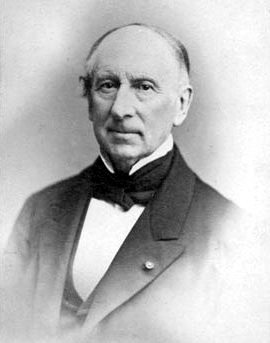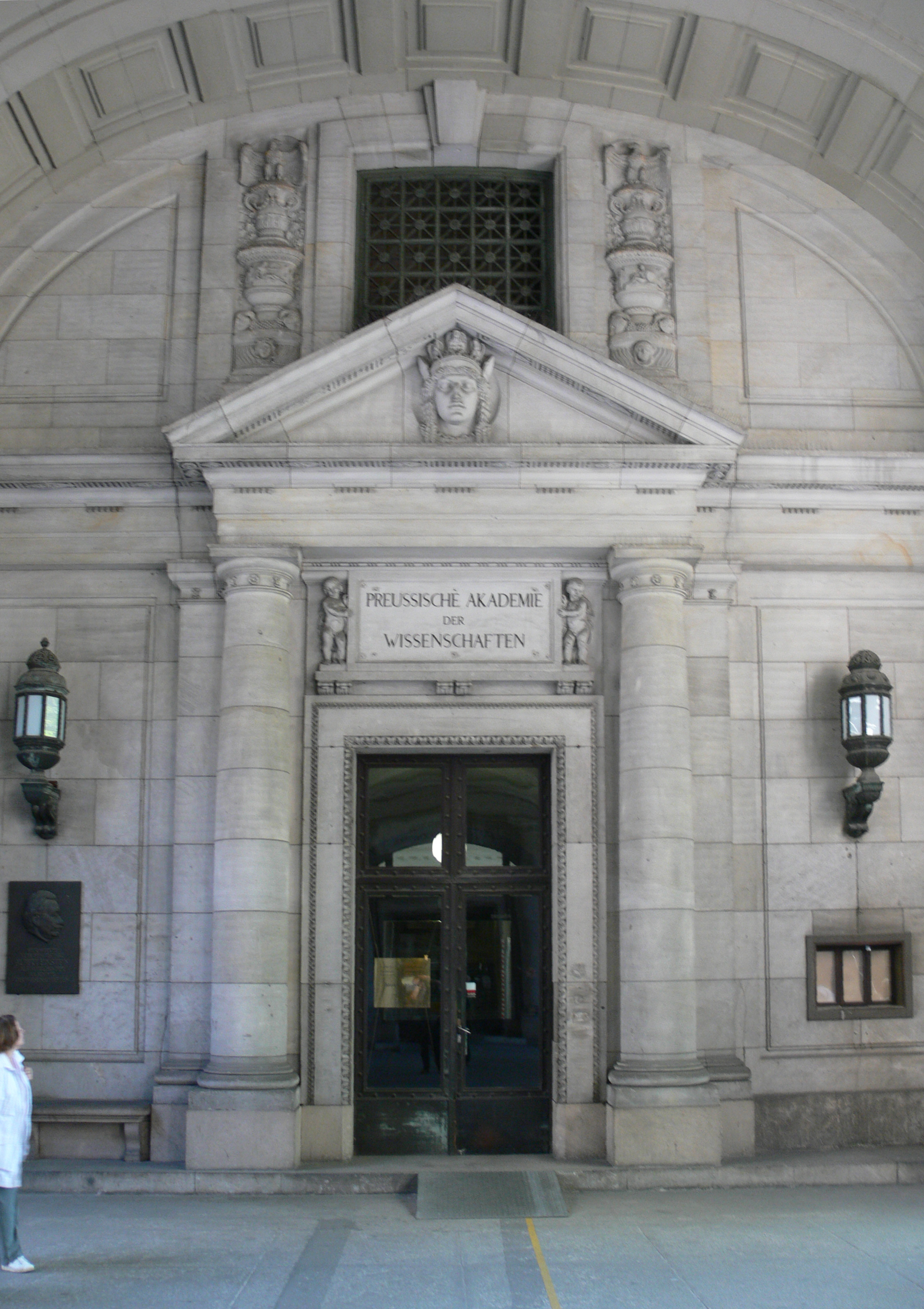|
Balance Of Angular Momentum
The balance of angular momentum or Euler's second law in classical mechanics is a law of physics, stating that to alter the angular momentum of a body a torque must be applied to it. An example of use is the playground merry-go-round in the picture. To put it in rotation it must be pushed. Technically one summons a torque that feeds angular momentum to the merry-go-round. The torque of frictional forces in the bearing and drag, however, make a resistive torque that will gradually lessen the angular momentum and eventually stop rotation. The mathematical formulation states that the rate of change \dot_c of angular momentum \vec L_c about a point \vec c, is equal to the sum of the external torques \vec M_c acting on that body about that point: \vec M_c = \dot_c The point \vec c is a fixed point in an inertial system or the center of mass of the body. In the special case, when external torques vanish, it shows that the angular momentum is preserved. The d'Alembert force count ... [...More Info...] [...Related Items...] OR: [Wikipedia] [Google] [Baidu] |
Skew-symmetric Matrix
In mathematics, particularly in linear algebra, a skew-symmetric (or antisymmetric or antimetric) matrix is a square matrix whose transpose equals its negative. That is, it satisfies the condition In terms of the entries of the matrix, if a_ denotes the entry in the i-th row and j-th column, then the skew-symmetric condition is equivalent to Example The matrix :A = \begin 0 & 2 & -45 \\ -2 & 0 & -4 \\ 45 & 4 & 0 \end is skew-symmetric because : -A = \begin 0 & -2 & 45 \\ 2 & 0 & 4 \\ -45 & -4 & 0 \end = A^\textsf . Properties Throughout, we assume that all matrix entries belong to a field \mathbb whose characteristic is not equal to 2. That is, we assume that , where 1 denotes the multiplicative identity and 0 the additive identity of the given field. If the characteristic of the field is 2, then a skew-symmetric matrix is the same thing as a symmetric matrix. * The sum of two skew-symmetric matrices is skew-symmetric. * A sca ... [...More Info...] [...Related Items...] OR: [Wikipedia] [Google] [Baidu] |
Augustin-Louis Cauchy
Baron Augustin-Louis Cauchy (, ; ; 21 August 178923 May 1857) was a French mathematician, engineer, and physicist who made pioneering contributions to several branches of mathematics, including mathematical analysis and continuum mechanics. He was one of the first to state and rigorously prove theorems of calculus, rejecting the heuristic principle of the generality of algebra of earlier authors. He almost singlehandedly founded complex analysis and the study of permutation groups in abstract algebra. A profound mathematician, Cauchy had a great influence over his contemporaries and successors; Hans Freudenthal stated: "More concepts and theorems have been named for Cauchy than for any other mathematician (in elasticity alone there are sixteen concepts and theorems named for Cauchy)." Cauchy was a prolific writer; he wrote approximately eight hundred research articles and five complete textbooks on a variety of topics in the fields of mathematics and mathematical physics. ... [...More Info...] [...Related Items...] OR: [Wikipedia] [Google] [Baidu] |
Newton's Second Law
Newton's laws of motion are three basic Scientific law, laws of classical mechanics that describe the relationship between the motion of an object and the forces acting on it. These laws can be paraphrased as follows: # A body remains at rest, or in motion at a constant speed in a straight line, unless acted upon by a force. # When a body is acted upon by a force, the time rate of change of its momentum equals the force. # If two bodies exert forces on each other, these forces have the same magnitude but opposite directions. The three laws of motion were first stated by Isaac Newton in his ''Philosophiæ Naturalis Principia Mathematica'' (''Mathematical Principles of Natural Philosophy''), originally published in 1687. Newton used them to investigate and explain the motion of many physical objects and systems, which laid the foundation for classical mechanics. In the time since Newton, the conceptual content of classical physics has been reformulated in alternative ways, inv ... [...More Info...] [...Related Items...] OR: [Wikipedia] [Google] [Baidu] |
Rigid Body
In physics, a rigid body (also known as a rigid object) is a solid body in which deformation is zero or so small it can be neglected. The distance between any two given points on a rigid body remains constant in time regardless of external forces or moments exerted on it. A rigid body is usually considered as a continuous distribution of mass. In the study of special relativity, a perfectly rigid body does not exist; and objects can only be assumed to be rigid if they are not moving near the speed of light. In quantum mechanics, a rigid body is usually thought of as a collection of point masses. For instance, molecules (consisting of the point masses: electrons and nuclei) are often seen as rigid bodies (see classification of molecules as rigid rotors). Kinematics Linear and angular position The position of a rigid body is the position of all the particles of which it is composed. To simplify the description of this position, we exploit the property that the body is r ... [...More Info...] [...Related Items...] OR: [Wikipedia] [Google] [Baidu] |
Euler's Equations (rigid Body Dynamics)
In classical mechanics, Euler's rotation equations are a vectorial quasilinear first-order ordinary differential equation describing the rotation of a rigid body, using a rotating reference frame with angular velocity ω whose axes are fixed to the body. Their general vector form is : \mathbf \dot + \boldsymbol\omega \times \left( \mathbf \boldsymbol\omega \right) = \mathbf. where ''M'' is the applied torques and ''I'' is the inertia matrix. The vector \boldsymbol\alpha=\dot is the angular acceleration. In orthogonal principal axes of inertia coordinates the equations become : \begin I_1\,\dot_ + (I_3-I_2)\,\omega_2\,\omega_3 &= M_\\ I_2\,\dot_ + (I_1-I_3)\,\omega_3\,\omega_1 &= M_\\ I_3\,\dot_ + (I_2-I_1)\,\omega_1\,\omega_2 &= M_ \end where ''Mk'' are the components of the applied torques, ''Ik'' are the principal moments of inertia and ω''k'' are the components of the angular velocity. Derivation In an inertial frame of reference (subscripted "in"), Euler's second law ... [...More Info...] [...Related Items...] OR: [Wikipedia] [Google] [Baidu] |
Berlin-Brandenburg Academy Of Sciences And Humanities
The Berlin-Brandenburg Academy of Sciences and Humanities (german: Berlin-Brandenburgische Akademie der Wissenschaften), abbreviated BBAW, is the official academic society for the natural sciences and humanities for the German states of Berlin and Brandenburg. Housed in three locations in and around Berlin, Germany, the BBAW is the largest non-university humanities research institute in the region.BBAW Introduction retrieved 06-21-2012. The BBAW was constituted in 1992 by formal treaty between the governments of Berlin and Brandenburg on the basis of several older academies, including the historic from 1700 and |
Equations Of Motion
In physics, equations of motion are equations that describe the behavior of a physical system in terms of its motion as a function of time.''Encyclopaedia of Physics'' (second Edition), R.G. Lerner, G.L. Trigg, VHC Publishers, 1991, ISBN (Verlagsgesellschaft) 3-527-26954-1 (VHC Inc.) 0-89573-752-3 More specifically, the equations of motion describe the behavior of a physical system as a set of mathematical functions in terms of dynamic variables. These variables are usually spatial coordinates and time, but may include momentum components. The most general choice are generalized coordinates which can be any convenient variables characteristic of the physical system.''Analytical Mechanics'', L.N. Hand, J.D. Finch, Cambridge University Press, 2008, The functions are defined in a Euclidean space in classical mechanics, but are replaced by curved spaces in relativity. If the dynamics of a system is known, the equations are the solutions for the differential equations describ ... [...More Info...] [...Related Items...] OR: [Wikipedia] [Google] [Baidu] |
Center Of Oscillation
The center of percussion is the point on an extended massive object attached to a pivot where a perpendicular impact will produce no reactive shock at the pivot. Translational and rotational motions cancel at the pivot when an impulsive blow is struck at the center of percussion. The center of percussion is often discussed in the context of a bat, racquet, door, sword or other extended object held at one end. The same point is called the center of oscillation for the object suspended from the pivot as a pendulum, meaning that a simple pendulum with all its mass concentrated at that point will have the same period of oscillation as the compound pendulum. In sports, the center of percussion of a bat, racquet, or club is related to the so-called " sweet spot", but the latter is also related to vibrational bending of the object. Explanation Imagine a rigid beam suspended from a wire by a fixture that can slide freely along the wire at point P, as shown in the Figure. An impulsive ... [...More Info...] [...Related Items...] OR: [Wikipedia] [Google] [Baidu] |
Jakob I Bernoulli
Jacob Bernoulli (also known as James or Jacques; – 16 August 1705) was one of the many prominent mathematicians in the Bernoulli family. He was an early proponent of Leibnizian calculus and sided with Gottfried Wilhelm Leibniz during the Leibniz–Newton calculus controversy. He is known for his numerous contributions to calculus, and along with his brother Johann, was one of the founders of the calculus of variations. He also discovered the fundamental mathematical constant . However, his most important contribution was in the field of probability, where he derived the first version of the law of large numbers in his work '' Ars Conjectandi''.Jacob (Jacques) Bernoulli [...More Info...] [...Related Items...] OR: [Wikipedia] [Google] [Baidu] |
Leonhard Euler
Leonhard Euler ( , ; 15 April 170718 September 1783) was a Swiss mathematician, physicist, astronomer, geographer, logician and engineer who founded the studies of graph theory and topology and made pioneering and influential discoveries in many other branches of mathematics such as analytic number theory, complex analysis, and infinitesimal calculus. He introduced much of modern mathematical terminology and Mathematical notation, notation, including the notion of a function (mathematics), mathematical function. He is also known for his work in mechanics, fluid dynamics, optics, astronomy and music theory. Euler is held to be one of the greatest mathematicians in history and the greatest of the 18th century. A statement attributed to Pierre-Simon Laplace expresses Euler's influence on mathematics: "Read Euler, read Euler, he is the master of us all." Carl Friedrich Gauss remarked: "The study of Euler's works will remain the best school for the different fields of mathematics, a ... [...More Info...] [...Related Items...] OR: [Wikipedia] [Google] [Baidu] |
Newtonian Laws
Newton's laws of motion are three basic laws of classical mechanics that describe the relationship between the motion of an object and the forces acting on it. These laws can be paraphrased as follows: # A body remains at rest, or in motion at a constant speed in a straight line, unless acted upon by a force. # When a body is acted upon by a force, the time rate of change of its momentum equals the force. # If two bodies exert forces on each other, these forces have the same magnitude but opposite directions. The three laws of motion were first stated by Isaac Newton in his ''Philosophiæ Naturalis Principia Mathematica'' (''Mathematical Principles of Natural Philosophy''), originally published in 1687. Newton used them to investigate and explain the motion of many physical objects and systems, which laid the foundation for classical mechanics. In the time since Newton, the conceptual content of classical physics has been reformulated in alternative ways, involving differen ... [...More Info...] [...Related Items...] OR: [Wikipedia] [Google] [Baidu] |







